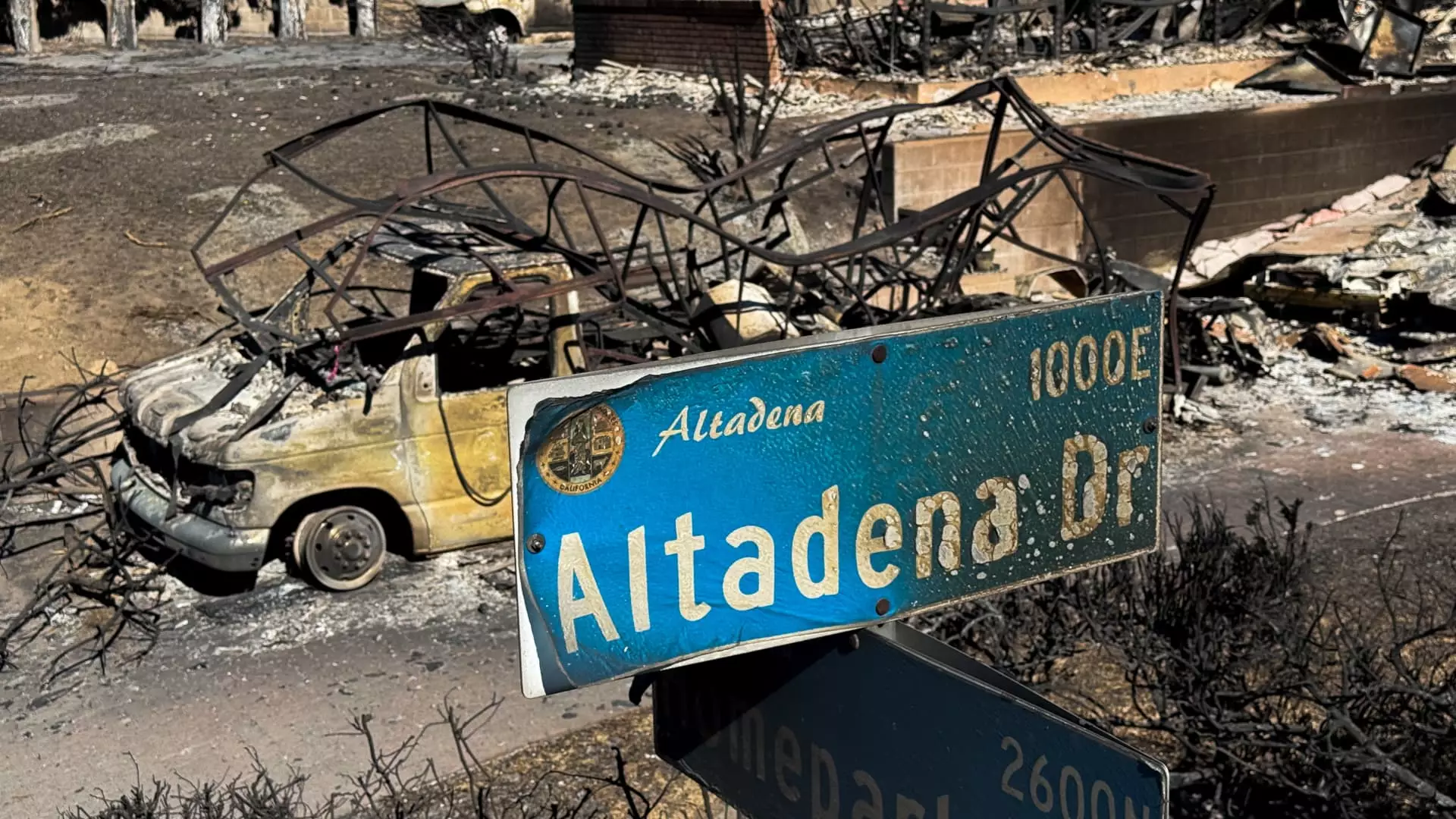The state of California has become a term synonymous with wildfires, especially in recent years as climate-related challenges have increased the frequency and intensity of these blazes. Los Angeles, one of the most populous cities in California, is currently grappling with an unprecedented wildfire crisis that has displaced thousands and decimated entire neighborhoods. The confluence of climate change, urban development, and vast natural landscapes makes this situation particularly dire. As the fires continue to rage, they pose profound implications not only for the residents but also for the insurance industry that safeguards properties in fire-prone areas.
Recent analysis from Wall Street heavyweights like Goldman Sachs and Wells Fargo has painted a grim picture for insurers exposed to the California homeowners market. They suggest that the financial impact of current wildfires could rack up insured losses close to $30 billion, far surpassing the record-breaking $12.5 billion observed from the catastrophic 2018 Camp Fire. This insight underscores a pressing reality: the insurance industry, already under pressure, is bracing for potential earnings hits of up to 20%. Such figures could fundamentally alter how insurers operate and manage risk in areas highly susceptible to disasters.
The severity of recent fires, particularly the Palisades Fire, which has consumed over 17,000 acres and destroyed more than 1,000 homes, exemplifies this crisis. The demographics of these affected areas, characterized by high property values—exemplified by an average home price of $3.5 million—represent a unique risk profile that exacerbates financial fallout for insurers catering to high-net-worth clients.
With the ongoing ferocity of wildfires, firms specializing in high-net-worth insurance, such as Chubb and Cincinnati Financial, will find themselves particularly vulnerable. Bank of America has indicated that these companies could experience significant earnings-per-share declines, predicting that Cincinnati Financial might face a staggering 20% drop by 2025 due to the escalating insured losses. The implications extend beyond the immediate financial hit; they signal a shift in the risk landscape for insurers who have primarily focused on affluent clients living in high-risk zones.
Although other national insurance underwriters, like Progressive, might not face the same level of exposure, the current crisis underlines the necessity for a reassessment of coverage limits, risk assessments, and policy pricing models. Companies must thoroughly analyze their portfolios and consider possible adjustments to ensure their sustainability in a volatile environment.
The stock market reaction to these calamities has been swift and pronounced. Following the latest rounds of fire damage reports, shares of companies like Chubb and Cincinnati Financial have already begun to reflect the anticipated losses, with notable decreases of 5.1% and 4.6%, respectively. Analysts are apprehensive about the ripple effects of these wildfires, indicating that firms like Everest and Travelers could also face double-digit EPS declines in the near future.
Organizations that operate within the same marketplace must brace themselves for intensified competition as companies reevaluate their pricing strategies and adjust coverage options to retain policyholders while contending with increased claims.
While financial implications dominate this discussion, it is crucial to acknowledge the human cost of these disasters. As wildfires wreak havoc, the community bears the brunt of loss—not just in terms of property but, tragically, through loss of life. Reports have indicated a rising death toll, with at least 24 attributed to the most recent fires. Recovery teams tirelessly execute house-to-house searches through charred neighborhoods, revealing the full extent of the devastation.
The emotional toll on affected families is incalculable, and the insurance process can often add layers of complexity to their recovery. Many homeowners are left to navigate the intricacies of claims processes even as they deal with grief and loss, which further accentuates the important role that insurance plays in disaster recovery.
As California continues to battle the flames, the insurance industry finds itself at a crossroads. The emerging challenges posed by climate change, fluctuating market dynamics, and an evolving risk landscape demand innovative solutions. Insurers must rethink their strategies to mitigate losses, address the needs of dislocated homeowners, and establish resilient frameworks for operation in a world where wildfires may only become more frequent. As this crisis unfolds, it is imperative for all stakeholders, including insurers and homeowners, to prepare for a future that recognizes the harsh realities of living in fire-prone regions.

